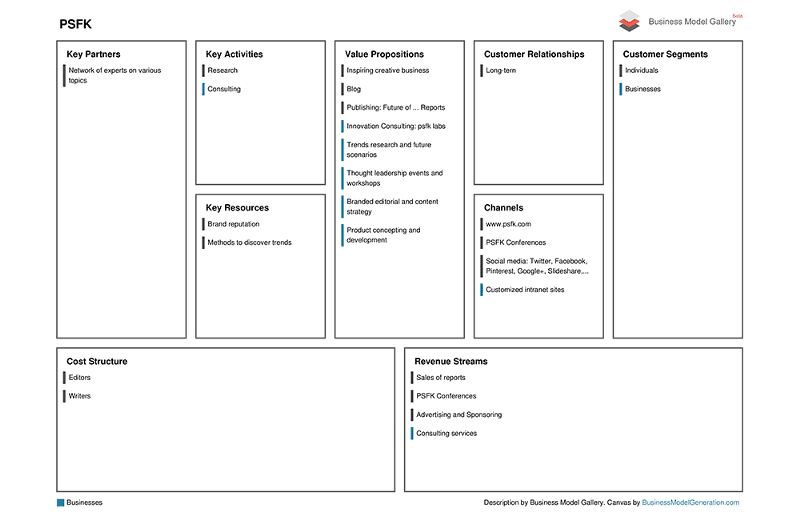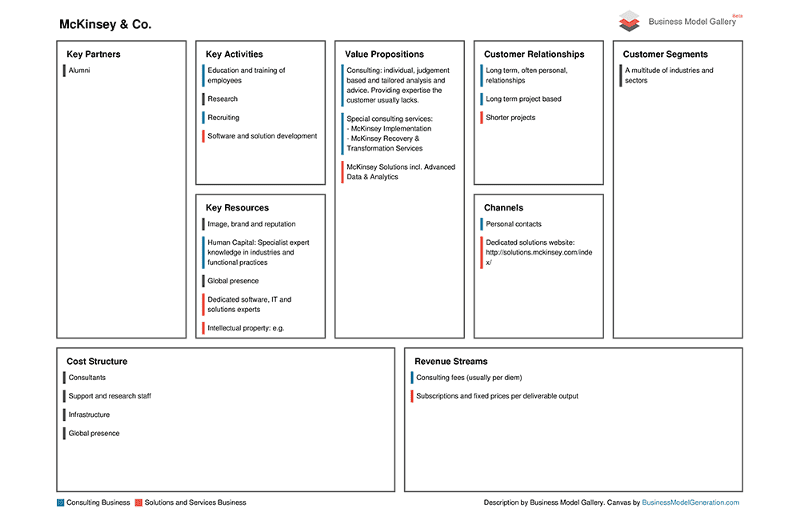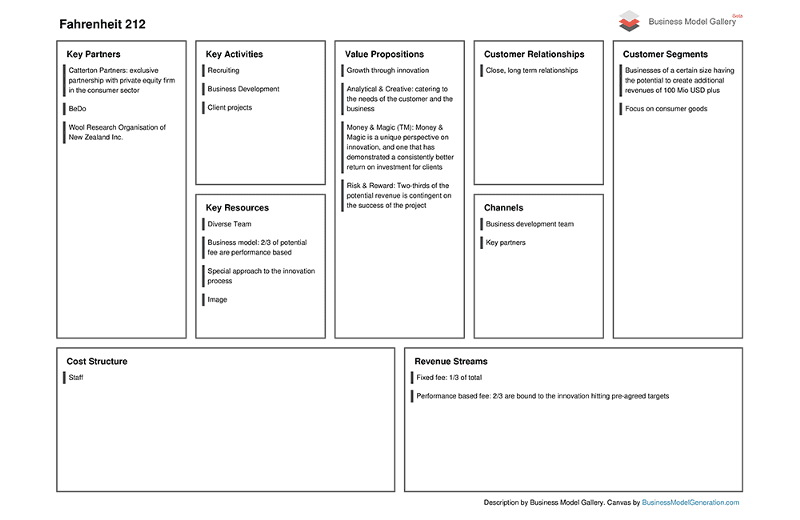Reinventing the consulting business model
Friday, August 7, 2015
The traditional consulting business model is based on two principle ideas: (1) hiring people (top talent if possible) and (2) charging clients a fee per hour or day for gaining access to this talent, its expertise, and/or manpower. Depending on the type of consulting or the brand, the pendulum swings more towards focusing on providing and buying on the customer side, the more sophisticated expertise, or the simpler manpower.
While the bulk of the consulting industry functions according to these basic principles, new business models have been successfully launched in recent years, often creating superior value for customers, the firms themselves and the ecosystem they are embedded in (for more on these 3 types of value propositions, see Take your Business Model to the Next Level).
From hiring a team to offering flexible access to top talent
The traditional consulting model is based on utilizing existing assets, i.e. the consultants, as much as possible. There is a strong motivation to sell as many consultants and days as possible. Hence, consulting teams tend to be staffed with a variety of people and the incentive is high to put as many consultants on the team as possible. As a client, you seldom have a choice as to which consultants you will get.
Eden McCallum, a European based management consultancy, changed this fundamental principle. Eden McCallum does not hire any consultants but instead has built an extensive network of senior, highly experienced, independent consultants, it can draw upon to staff projects. Clients have a say in which consultants they would like to work with and Eden McCallum goes to great length trying to find the best match between client and consultant. As clients became more sophisticated in buying consulting services (many managers have been consultants) they know best what they need and can make better buying decisions. Partners are Eden McCallum do not manage the client projects, but instead leave this to the consultants. Consultants are not pressured to sell new projects, as this is the job of the partners, and hence can focus on delivering successful projects. The lower overhead cost translates into lower fees for the customers, while consultants can still earn a considerable salary from their freelance work, plus they enjoy the flexibility to decide how much they would like to work. Nobody pressures them into accepting the next consulting project.
How can your business take advantage of key trends, while at the same time combining the best of existing models in your industry?
Eden McCallum has succeeded in creating a new business model while taking advantage of a trend towards freelancing as well as the desire of many professionals to work independently and to have more control of their careers, e.g. by defining their own terms of engagement.
Another major trend observed was the maturing of the consulting market in which clients desired to have more control and value in the consulting process.

To learn more about the Eden McCallum business model, visit businessmodelgallery.com/models/eden-mccallum/ and www.edenmccallum.com.
From staffing projects with people to commercializing expertise
How can you leverage your platform and commercialize your knowledge in new ways?
Instead of selling expertise through consultants, PSFK, a New York based trend research consultancy, sells expertise and advice in the form of reports. PSFK began as a blog chronicling everyday design and innovation. Meanwhile, it has evolved into a research, publishing and consulting company focusing on innovative trends and innovation consulting. Besides its off the shelf reports on trends in various industries and areas, it offers customized research services and turns the findings of this research into strategic advice for its customers.
PSFK operates a global network of experts it can draw upon for putting together its reports. Expertise is made available not through personal consultation but through special reports. As such, expertise can be leveraged beyond the single consultant and project and new revenue streams are possible.

To learn more about the PSFK business model, visit www.businessmodelgallery.com/models/psfk/ and http://www.psfk.com.
From consulting to solutions
How can you leverage your core assets in new ways and create steady revenue streams?
The traditional McKinsey business model is based on individuals applying their expertise to customers’ problems. McKinsey Solutions offers a range of software and technology-based tools for data analytics and data-driven decision-making in various functions and industries. McKinsey Solutions offers a very structured, repeatable, and standardized process, which is independent of the individual consultants. Customers pay for an end-result, which is delivered as a product, usually in a shorter timeframe than the typical consulting engagement. Through licensing agreements, the solutions business model provides a steady revenue stream, enabling McKinsey to engage in longer customer relationships outside of its traditional project business. McKinsey’s business model innovation leverages its expertise in these fields and codifies the expertise in standardized solutions.

To learn more about the McKinsey Solutions business model, visit www.businessmodelgallery.com/models/mckinsey/ and www.mckinseysolutions.com.
How can you create value for your customers by reducing their risk and aligning your success with the success of your customers?
From fixed fees to aligning fees with the client’s success
Instead of charging clients for hours spent, Fahrenheit 212, a New York based innovation consultancy, charges clients for objectives achieved, aligning 2/3 of its fee with the successful achievement of pre-defined goals throughout the innovation process and the success of their innovations in the market. Hence, the risk for clients is considerably reduced, as they only pay if the output of Fahrenheit 212’s work is successful.

To learn more about the Fahrenheit 212 business model visit: www.businessmodelgallery.com/models/fahrenheit-212/ and www.fahrenheit-212.com.
As these examples show, business model innovation is alive and well in the consulting industry. These new business models take advantage of what we call “business model design themes”, like for example “pay-per-use”, “complementary offerings”, “turning fixed cost into variable cost”, etc. allowing them to become more flexible while lowering their cost and introducing new revenue streams.
It is well possible to successfully challenge the traditional ways of how an industry works. You just have to be brave enough to do so.
For more inspiration on how to reinvent your business model, visit the Business Model Gallery.
Originally published at www.innovationmanagement.se on July 13, 2015.


